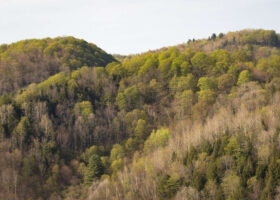
Field Guide to April 2024
As grays and browns permeate the muddy landscape of late spring, summer colors lie just beneath the surface, almost ready to bloom. Strolling through your neighborhood or favorite woodland in April, you may begin to notice flashy dapples of the season’s first wildflowers. The trees around you will start to reverberate with birdsong while the ponds echo with choruses of Wood Frogs and Spring Peepers. If you’re lucky, you may even catch the buzz of an early-season bee as it forages. Here’s our guide to some of the new life bursting forth this month.
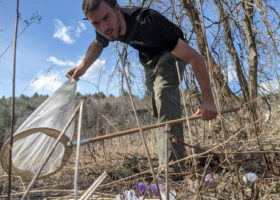
VCE is Abuzz with High-impact Bee Work
For over a decade, VCE has been positively buzzing with activity, surveying far and wide for bee species across the state. Our efforts kicked off with the Bumblebee Atlas in 2012 and reached a crescendo in 2022 with the State of Vermont’s Wild Bees report. Little did we know that this would start a multi-state ripple of pollinator work.
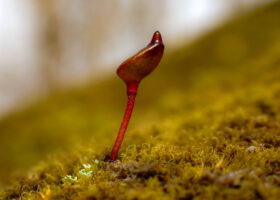
March 2024 Photo-observation of the Month
Congratulations to Levi Smith (origamilevi) or winning the March 2024 Photo-observation of the Month for the Vermont Atlas of Life on iNaturalist! Their photograph of Bug-on-a-stick received the most faves of any iNaturalist observation in Vermont during the past month.
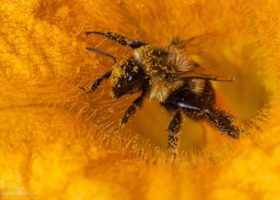
VAL Director Provides Testimony on Proposed Neonicotinoid Ban
On February 9, 2024, VCE Conservation Biologist and Vermont Atlas of Life Director Kent McFarland provided testimony to the Vermont State Agriculture, Food Resiliency & Forestry Committee on H.706, a bill requiring restrictions on neonicotinoids. What follows is the text from the written testimony.
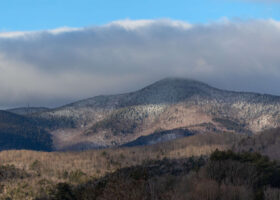
Field Guide to March 2024
March is a month of battles between warm and cold, between winter’s refusal to leave and spring’s insistence on arriving. So, here are some signs of spring to look out for this month.
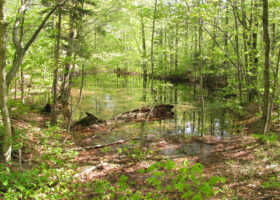
VPAtlas Places Statewide Vernal Pool Data at Your Fingertips
Conserving sensitive, vitally important ecosystems and natural communities, like vernal pools, is essential to addressing biodiversity loss. However, knowing vernal pools’ locations is a critical first step. The Vernal Pool Atlas (VPAtlas), a joint effort of the Vermont Center for Ecostudies and the Vermont Fish & Wildlife Department, is designed to do just that.
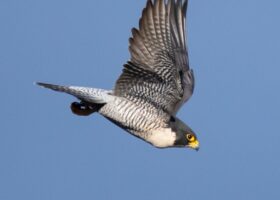
February 2024 Photo-observation of the Month
Congratulations to iNat user @winterglow for winning the February 2024 Photo-observation of the Month for the Vermont Atlas of Life on iNaturalist! Their mid-flight photograph of the fastest bird on earth, the Peregrine Falcon, received the most faves of any iNaturalist observation in Vermont during the past month.
An Update on VCE’s Continuing Diversity, Equity, and Inclusion Efforts
Nearly four years ago, during a period of national reflection on barriers to social justice, we at the Vermont Center for Ecostudies articulated a commitment to diversity, equity, and inclusion (DEI). Since then, we’ve engaged in a challenging but rewarding process to advance DEI principles and practices within our organization and in the field of conservation science. In this update, we describe some of our efforts to continue learning, to foster a culture that honors differences, and to promote diversity in the field of ecology
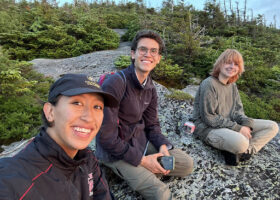
VCE Internship Supports the Future of Ecology
As an organization that strives to “unite people and science for conservation,” we recognize that to become stronger and more resilient, we must create a culture that embraces diversity and fosters inclusivity. With that goal in mind, VCE launched our Future Ecologists internship in 2022.
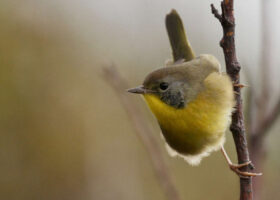
Introducing VCE’s ALL IN for Biodiversity Campaign
When the VCE team developed a comprehensive organizational strategy in 2018, we charted an ambitious course, knowing that its success would require increasing our capacity. As we aspire to greater conservation impact, we’re going ALL IN for Biodiversity.
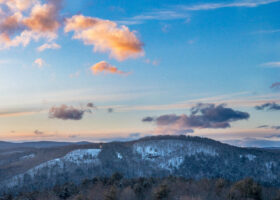
Field Guide to February 2024
This month, wildlife and the rest of us here in New England will cross a significant threshold: 10 hours of daylight. You can sense it when you head out in the morning. Even though we’ve got lots more winter, at least the sound of spring is in the air. So here’s a Field Guide to February to keep your hopes up all day long.
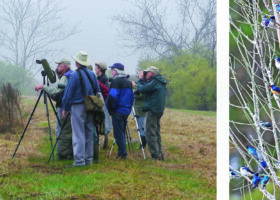
Reflections from 65 (Collective) Years of Birding the Upper Valley
Some retirees seek new pursuits in life, branching out and diversifying with their newfound free time. Others simply do more of what they always did. Chris Rimmer and Kyle Jones embody this latter approach, birding local Upper Valley haunts more than ever since their recent retirements. Read their reflections on 65 collective years spent birding the Upper Valley.
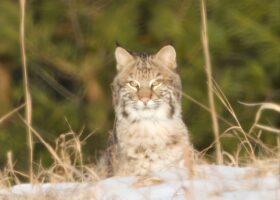
January 2024 Photo-observation of the Month
Congratulations to iNat user @melissainvt for winning the January 2024 Photo-observation of the Month for the Vermont Atlas of Life on iNaturalist! Her stunning image of a Bobcat in the snow received the most faves of any iNaturalist observation in Vermont during the past month.
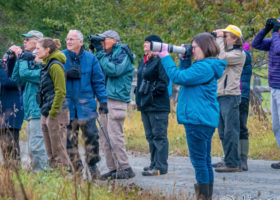
Birders Bolster Big Data Celebrating the 20th Anniversary of Vermont eBird
2023 marked the 20th anniversary of Vermont eBird and the 13th annual Vermont eBird County Quest, a friendly competition encouraging birders statewide to submit their bird sightings to Vermont eBird. Since 2003, more than 15,000 Vermont eBirders have submitted more than 693,000 complete checklists, representing all 392 species of birds ever reported from Vermont.
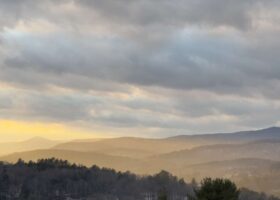
Field Guide to January 2024
Although the days are slowly growing longer, life in the Northeast still finds itself in the depths of winter. January is about survival. Wildlife that doesn’t migrate adapts instead to make it to spring. Here are a few tidbits of natural history happening outdoors this month around you.
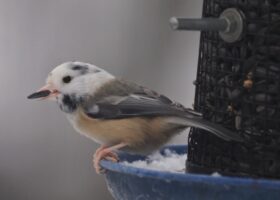
December 2023 Photo-observation of the Month
Congratulations to iNat user @c_burns802 for winning the December 2023 Photo-observation of the Month for the Vermont Atlas of Life on iNaturalist! Their photos of an exceptionally unique Black-capped Chickadee received the most faves of any iNaturalist observation in Vermont during the past month.
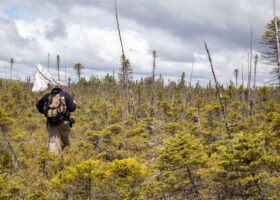
2023 Field Season Project Summaries
Wow, what a field season! Do we feel like that every year at VCE? Truthfully, yes, but this year is one for the books.
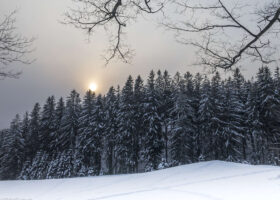
Field Guide to December 2023
Fear not—during December’s short days and long nights, there’s still plenty of life in the fading light. Once we pass the winter solstice, which strikes at 10:27 PM on December 21, more light will creep back. Until then, here’s some wintry natural history to keep you going.
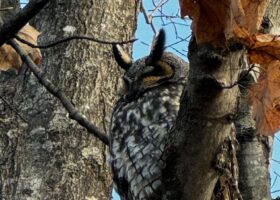
November 2023 Photo-observation of the Month
Congratulations to Stephanie McCaull for winning the November 2023 Photo-observation of the Month for the Vermont Atlas of Life on iNaturalist! Her photos of a remarkable chance encounter with one of Vermont’s most secretive owls received the most faves of any iNaturalist observation in Vermont during the past month.
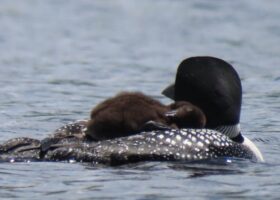
2023 Loon Field Season Summary
Well folks, it’s that time of year, and the 2023 field season is officially behind us. What a year it was, filled with loon chick rescues, raft building, dedicated volunteers, and historic flooding throughout the state. Here is a 2023 recap of everything loon.
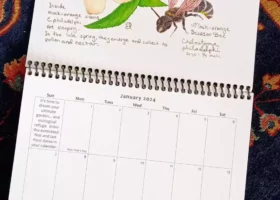
2023 VCE Gift Guide for Nature Lovers
Need a gift for the naturalist in your life? Look no further than VCE’s Gift Guide! We have apparel, books, mugs, art, and more that will truly inspire you to get back outdoors.
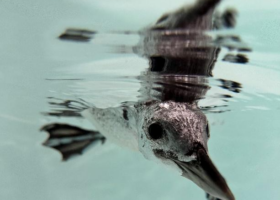
A Tale of Two Loon Chick Rescues
This past summer VCE was involved in two very different loon chick rescues with very different outcomes. Although these ordeals did not have a lot in common, they each had dedicated and caring volunteers, willing to use their time and resources to help these birds.
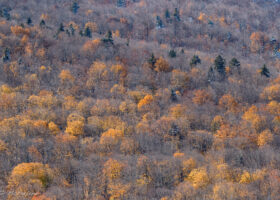
Field Guide to November 2023
“Stick Season,” as we call this gray, leafless time in New England, is anything but lifeless. With November comes the rushed activity of wildlife either preparing for their winter stay or leaving Vermont for their winter location. There is a sense of fall finality as the last deciduous trees drop their leaves. November also hails some of Vermont’s winter migrants, coming just in time to catch the first flakes. Learn more in our Field Guide to November.
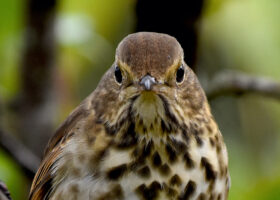
October 2023 Photo-observation of the Month
Congratulations to Craig Hunt for winning the October 2023 Photo-observation of the Month for the Vermont Atlas of Life on iNaturalist! His head-on portrait of a handsome Hermit Thrush received the most faves of any iNaturalist observation in Vermont during the past month.
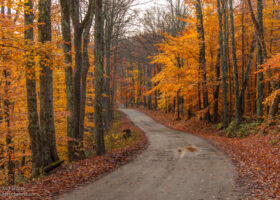
Field Guide to October 2023
The month of October reminds us of the cyclical nature of life. Like spring, autumn is a season of change. The forested hills fade from summer emerald to a watercolor painting of red and gold and brown. Here’s your field guide to some moments that you might not otherwise notice during these few precious weeks that feature colored hills beneath a deep blue sky, with the calls of migrating geese high overhead and the last Monarchs gliding silently southward.
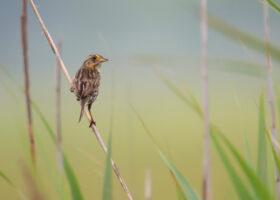
The Rising Seas and Stakes for Coastal New England Wildlife
Many conversations about sea level rise in New England center the disastrous effects it will have on coastal infrastructure and economies. But damage to fragile coastal ecosystems and the species that rely on them may be unmeasurable and irrecoverable. A recent study reveals new predictions about Saltmarsh Sparrows’ fate under moderate sea level rise scenarios.
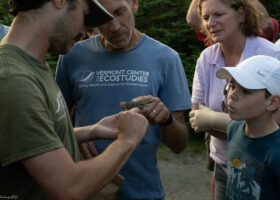
VCE Wraps 32 Years on Mansfield with a Flourish
It’s impossible to keep VCE biologists away from Mt. Mansfield’s ridgeline, even after 32 years. Following a summer of record wet weather, VCE’s annual fall pilgrimage to the mountain yielded 183 mist net captures, including a fat-encased female Blackpoll Warbler about to undertake her 5th nonstop transoceanic fall migration to northern South America.
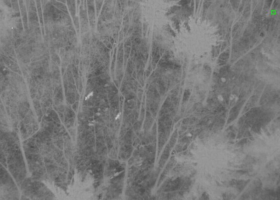
Using Both Old and New Technology to Monitor Forests
When VCE first partnered with Raritan Valley Community College to monitor forest response to prescribed burning in the Green Mountain National Forest, we had some basic questions to address—what data do we want to collect and how will we collect it?
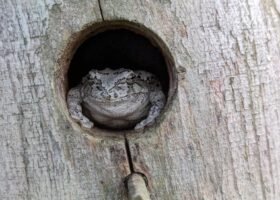
September 2023 Photo-observation of the Month
Congratulations to Joshua Phillips for winning the September 2023 Photo-observation of the Month for the Vermont Atlas of Life on iNaturalist! His photo of an unexpected bird house occupant received the most faves of any iNaturalist observation in Vermont during the past month.
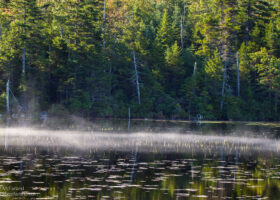
Field Guide to September 2023
It can happen almost anywhere. On a cool, foggy morning, when fall warblers drop from their nocturnal migratory flights into your backyard. Or on a hilltop when the Broad-winged Hawks circling above and Monarchs gliding southward convince you that summer is indeed coming to a close. Here is your field guide to some life on the move in September.
